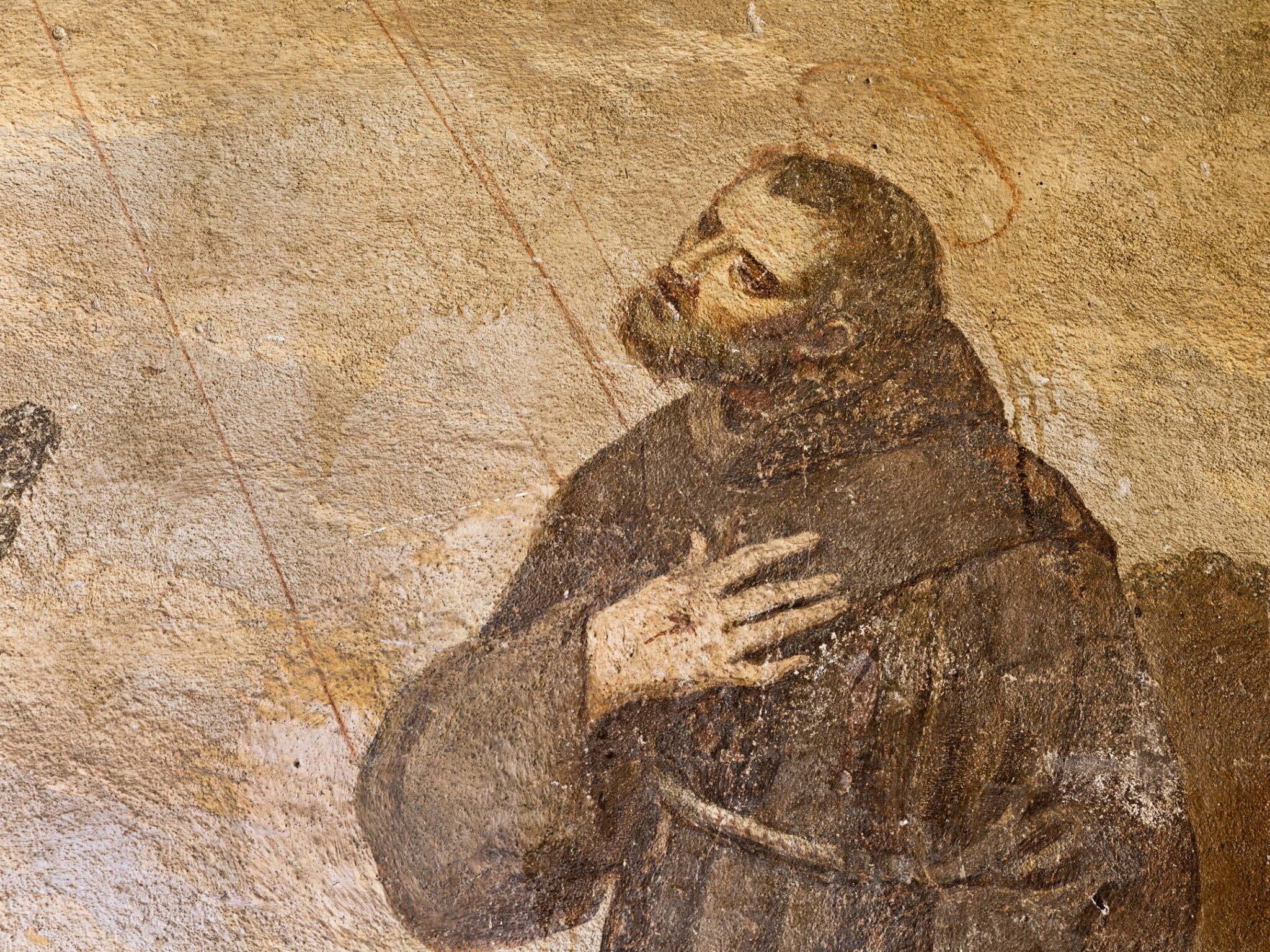Prayer is about God and our relationship to God. How we understand God’s relationship to us is very important. If I use distant and remote language to speak of God, then I will imagine that God is distant and remote. If I use only male language to speak to God, I will imagine that God is male. If I use language of humility and love to pray to God, then I will believe in a God who is humble and loving. The God to whom I pray is the God who directs my life; thus my image of God, the kind of God I believe in, is crucial to the way my journey of prayer proceeds.
Is God essentially engaged with me or disengaged? Is God primarily judge or savior for me? Do I treat God as ruler or lover? Is God faithful and interested in my world?
In his book The Social God, Kenneth Leech looks at various images of God that have governed Christian belief throughout history. For example, those who believe in a transcendent, spiritual God who does not get involved with the messiness of the world believe that the material world is irrelevant because only truly spiritual activities are important. Prayer to this type of God can be self-centered and present peace, stillness and tranquility as ends in themselves.
Followers of a God who is not passionate about creation and therefore never becomes angry or jealous promote a nice, safe God of love, life and joy. Because Jesus is a nice guy, the reality of the passion and the role of God in our ambiguity, messiness and sin is avoided. These types are like the flower children of the ’60s who always proclaimed that everything is beautiful and “all you need is love.”
On the other hand, some people may think of God as distant and authoritarian. Prayer is duty—not real communication or personal relationship. God is often in the way of everyday life because God is a harsh judge who uses the world as a courtroom. These people often live in the fear of God’s judgment and possible punishment in eternal life. There are many other images but the bottom line is: The way we experience God is the way we experience the world and all that is in the world. That is why to talk of a Franciscan journey or path of prayer means talking about a particular way of experiencing God.
Growth in prayer is the measure of our journey to God. In the monastic tradition, the idea of journey meant that the created world motivates a person to turn inward in the search for God. In order to know true reality, a monk or nun had to transcend this world and contemplate the one above.
A Different Approach
Francis of Assisi, on the other hand, attained the heights of contemplation through a penetrating vision of creation. With a basic education in reading and writing, Francis came to prayer from a popular and lay experience.
His family belonged to the rising merchant class in Assisi. His father, a cloth merchant, owned a shop in Assisi where Francis apparently worked. He was not only familiar with the daily business of buying and trading cloth, but also came into contact with many different types of people—farmers, craftsmen, artists, bakers—people who worked with their hands and valued the material things of the earth.
The idea of transcending this world to contemplate true reality would have been foreign to Francis’ thinking. Rather, he regarded earthly life as possessing ideal, positive potential as God’s creation. Some regard him as “the first materialist” in the best sense of the word because of the way Francis looked on the material world—not for what it is but for how it is: God’s creation.
For Franciscans, the journey to God is not linear but a journey inward, toward a new relationship with God in which God takes on flesh anew in one’s life. The Good News of Jesus Christ, as the Franciscans understood it, is that we do not “go to God” as if God sat in the starry heavens awaiting our arrival; rather, God has “come to us” in the Incarnation.
“The eternal God has humbly bent down,” St. Bonaventure wrote, “and lifted the dust of our nature into unity with his own person” (Sermon II on the Nativity of the Lord). We move toward God because God has first moved toward us: This is the Franciscan path of prayer.
The journey of prayer for Franciscans is the discovery of God at the center of our lives. We pray not to acquire a relationship with God as though acquiring something that did not previously exist. Rather, we pray to disclose the image of God in which we are created, the God within us, that is, the one in whom we are created and in whom lies the seed of our identity.
We pray so as to discover what we already have—“the incomparable treasure hidden in the field of the world and of the human heart” (Clare of Assisi, Third Letter to Agnes of Prague). We pray not to “ascend” to God but to “give birth to God”—to allow the image in which we are created to become visible. We pray to bear Christ anew. In prayer, therefore, we discover what we already have—the potential for the fullness of life, and this life is the life of Christ.
The Monastic Approach
According to the Rule of St. Benedict, the most influential of medieval mo-nastic Rules, a monk must flee the world to seek God because the world poses obstacles in the search for God. The monastic life is a renunciation of one’s will, the place to do spiritual combat for Christ so that one may strive for the Kingdom of heaven.
Monks sought to live the “life of the angels” through the Opus Dei, the work of continuous prayer that anticipated life in the heavenly Jerusalem. For Benedict, “nothing is to be preferred to the work of God” (Rule, 43.3).
Monastic life has a strong eschatological dimension, a desire for heaven and union with God. The monk strives for the Jerusalem above, the place where far from the world and from sin, one draws close to God, the angels and the saints who surround him. Here below, a monk’s life anticipates the life of heaven where the angels already enjoy the vision of God.
Anyone who reads the Benedictine Rule might surmise that Benedict had little interest in contemplation as part of monastic life. Rather, the goal of this life was simply to seek God. Even though at the end of his Rule (Ch. 73), Benedict indicates that monks who had a special gift of grace could strive for contemplation, that is not the goal of their life.
While Benedict spoke little of contemplation, his biographer Gregory the Great held that the contemplative life is the heavenly life, which cannot be lived perfectly “in this world.” Rather, contemplation is given to monks so that by purity of heart they may anticipate the incorruption of heaven. Gregory claimed that the contemplative life is superior to and better than the active life and thus should be preferred to the active when possible.
For monastic spiritual writers in general, contemplation could only be attained in the monastery because it anticipated union with God in heaven. To strive for such union required listening in silence and solitude, being alone in the presence of the transcendent One. The busy marketplace of the world with its sinful practices hindered the search for union with God.
It is no wonder that, up to the 13th century and the rise of the Franciscans, contemplation for the ordinary Christian was unthinkable. Few were believed to have the grace of this lofty pursuit. With the rise of Franciscan evangelical life, a new path to salvation emerged in the quest for God.
The Franciscan Path
The Franciscan path “to God” is an inversion of monastic values. Rather than fleeing the world to find God, God is to be found in the world. The idea that “the world is our cloister” finds its root in Francis of Assisi.
Disillusioned as a valiant knight after being wounded in battle, Francis had a profound experience of God in the broken-down church of San Damiano, which he visited one day. Face-to-face with the wounded and glorified Christ on the cross, Francis met the God of compassionate love, a God “bent over” in love in the wounds of the crucified Christ.
Bonaventure describes this encounter in his Major Legend (1.6) where he writes: “While [Francis] was praying and all of his fervor was totally absorbed in God, Christ Jesus appeared to him as fastened to a cross.” Bonaventure indicates that there was no exchange of words. Rather, “his [Francis’] soul melted at the sight, and the memory of Christ’s passion was impressed on the innermost recesses of his heart.”
This encounter with the other, crucified God changed Francis in the very core of his being. As Bonaventure states: “From then on he clothed himself with a spirit of poverty, a sense of humility, an eagerness for intimate piety.” The expression of God’s self-giving love in the cross impressed Francis in such a way that he began to change. This event marked the beginning of Francis’ spiritual journey.
The God whom Francis discovered in the cross of Jesus Christ was, as we already pointed out, a God “who delights to be with the simple and those rejected by the world” (Thomas of Celano, First Life, 12.31). Impressed by the love of the Crucified, Francis could no longer remain alone in his search for God. Rather, he had to find God in relation to the fragile creatureliness of others: his neighbor, his brother and, yes, even the tiny creatures of nature.
The necessity of the other for Francis thrust him into radical poverty whereby everything that hindered his relation to the other was stripped away. Seeing God in the wounds of the Crucified drew Francis to a new level of compassion and to sharing his goods, indeed, his very self, with others.
Bonaventure writes that “to poor beggars he wished to give not only his possessions but his very self, sometimes taking off his clothes…ripping them in pieces to give to them” (1.6). The encounter with Christ as other, therefore, gave Francis a new openness and freedom. Embraced by the compassionate love of God, Francis was liberated within and went out to embrace others in love.
According to Bonaventure, Francis discovered his own identity through encountering the crucified Christ, that is, he discovered his own woundedness in the image of the crucified man. This self-knowledge enabled him to go out to the poor and sick.
Describing Francis as the truly humble person, Bonaventure writes: “As Christ’s disciple he strove to regard himself as worthless in his own eyes and those of others. He used to make this statement frequently: ‘What a person is before God, that he is and no more’”(6.1).
Naming the truth about himself before God freed Francis to make the journey to the other person and back again. Only in relation to the other did his weaknesses become strengths, for it was in naming his weaknesses that Francis matured in authentic human love.
Because of the mystery of Christ and the embrace of God’s compassionate love in the wounded Christ, Francis grew spiritually as a person, finding his true self to be a relational self. The deeper he grew in relationship with Christ, the deeper he grew in relationship with others.
As Francis deepened his relationship with Christ, the other became less for Francis an object and more a brother. Community became the concrete expression of the Christ mystery for Francis. The deeper he entered into the mystery of Christ in his own life, the more he recognized Christ in the world around him, in his brothers, the lepers, in the sick and in the tiny creatures of creation.
“In all the poor,” Bonaventure wrote, “Francis saw before him a portrait of Christ” (8.5). Even animals represented Christ to him. Seeing the birth of a lamb, for example, Francis exclaimed, “Alas, brother lamb, innocent animal, always displaying Christ to people!” (8.6).
Bonaventure highlights the idea that the one who dwells in Christ dwells in the other, because the fullness of who we are in Christ can only be found in the other. The difference of the other, therefore, was not an obstacle for Francis in his search for God but rather a celebration of God. For he found his own identity in God and he found God in the fragile, wounded flesh of his brothers and sisters.
It is prayer, according to Bonaventure, that impelled Francis to see the world with new vision, a contemplative vision that penetrated the depths of reality. The world became Francis’ cloister because he found it to be permeated with the goodness of God.
Jesus: Revelation of the Father
In his writings, Francis showed less a personal relationship to Christ than to the Father—the source of all goodness and the Most High. Yet Francis realized that the Son is the beloved of the Father; thus the deepest reason for clinging to Jesus is that he reveals the Father. Francis believed that Christ alone is the One in whom the Father takes delight because the Son satisfies the Father in everything.
Instead of relating to Jesus in a personal way, Francis often used the expression “Word of the Father” when speaking about the person of Christ. This is surprising for one who was considered a “second Christ” in the Middle Ages. Yet we have evidence of this understanding in Francis’ writings.
In the second version of his Later Admonition and Exhortation, for example, he states that, “Through his angel, St. Gabriel, the Most High Father in heaven announced this Word of the Father, so worthy, so holy and glorious, in the womb of the holy and glorious Virgin Mary” (4-5).
Francis saw God as communicative and expressive—perhaps like a divine cell phone! The Father’s self-expression is his word. Jesus is the word of the Father. Francis saw a connection between the divine word, which is entirely worthy, holy and glorious, and the Incarnate word, which assumed our fragile human nature.
Francis emphasized to his followers that the word of the Father left his divine riches in order to accept the poverty of humanity. God expresses himself by giving himself away in love. The Incarnation is where the word of the Father “descends” to embrace us in love. This movement of descent, shown to us in Christ, is a daily event that we see and touch in the Eucharist:
“Behold, each day he humbles himself as when he came from the royal throne into the Virgin’s womb; each day he himself comes to us, appearing humbly, each day he comes down from the bosom of the Father upon the altar in the hands of a priest” (Admonition One).
The descent of the word into humanity reminded Francis of the humility of God—not simply the humble circumstances of Jesus’ earthly beginnings and life but rather another name for God, who is, above all, love. In his Praises of God, Francis exclaimed, “You are love…You are humility.”
Francis called God “humility” because he perceived the love of the Father in the descent of the Son in the Incarnation. In Bonaventure’s terminology, the Father bends low in love to embrace us fragile human beings in and through the Son, the Word of God. The Word incarnate, Jesus of Nazareth, expresses the humble love of God.
Implications for Prayer
How does this theology of the word play out in Francis’ journey of prayer? For Francis, God loves us where we are—with our frailty, weaknesses and insecurities. This is the meaning of his encounter with the God of compassionate love as seen in the cross of San Damiano.
Francis understands that while God is incomprehensible and ineffable, he is at the same time “bent over” in love for us, in and through the Son, Jesus Christ. God is infinite in love and intimate in love, far beyond us yet intensely close to us.
By following in the footprints of Jesus Christ, we are led to the Father of incomprehensible love through the Spirit, who joins us to Christ, who in turn leads us to the Father. For Francis, Christ is the center of the Trinity and the center of our relationship to God.
For Francis, prayer is not a flight from the world toward a transcendent God; rather it centers on the mystical body of Christ and our participation in this mystery. God took on our flesh that we might discover his eternal face in ourselves. This is the good news of Jesus Christ and of our lives in Christ. Prayer channels us into the depths of the Christ mystery where the fullness of our humanity—and our happiness—lies.
Help from St. Clare
In her Second Letter to St. Agnes of Prague, Clare directed her toward a relationship with the God of self-giving love. Take some time to meditate on the following words of Clare and consider whether or not your relationship with God is leading you more deeply into the mystery of Christ:
“Gaze upon [Him], Consider [Him], Contemplate [Him], As you desire to imitate [Him]. If you suffer with Him, you shall reign with Him, [if you] weep [with Him], you shall rejoice with Him, [if you] die [with Him] on the cross of tribulation, you shall possess heavenly mansions in the splendor of the saints and, in the Book of Life, your name shall be called glorious among people.”
Clare’s words prompt the following questions for reflection…
- Who is the God to whom you pray? What is your image of God?
- How do you envision the journey to God? Does a ladder, a spiral or another image capture your relationship to God?
- Where do you find God? In silence? In other people? Only in liturgical prayer? Is God “up above” you, transcendent and distant to you? Or do you experience God’s intimate presence in your life?









1 thought on “St. Francis’ Style of Prayer”
Very insightful and useful. I’m preparing a talk on Franciscan prayer and this helped immensely.